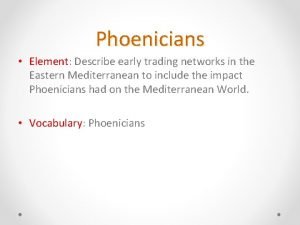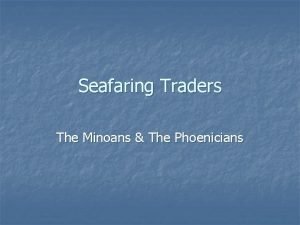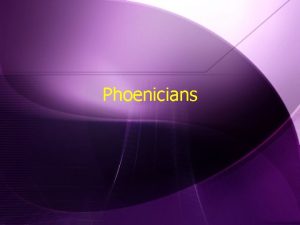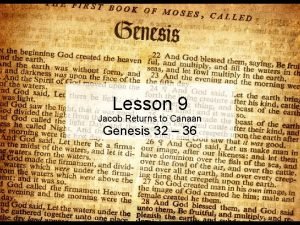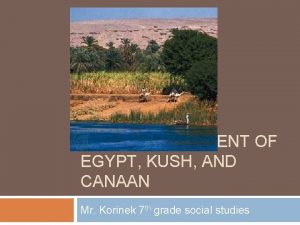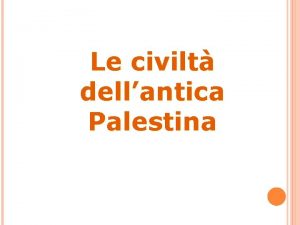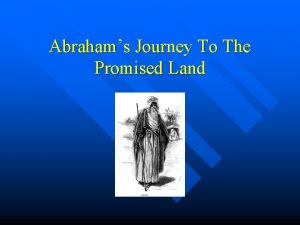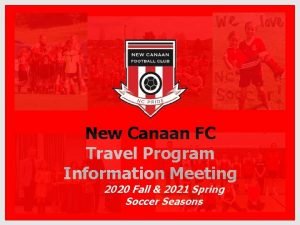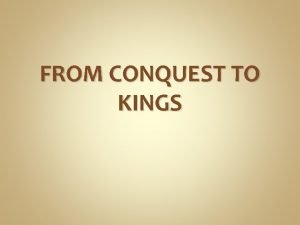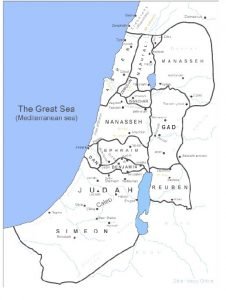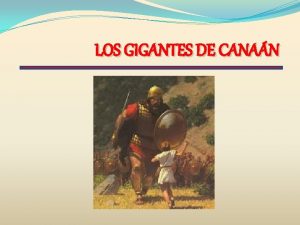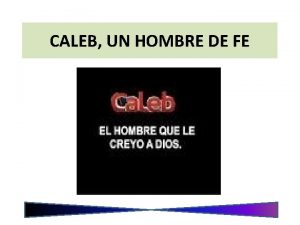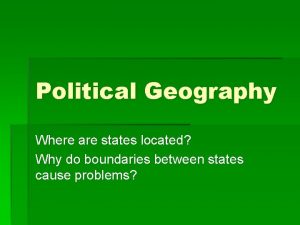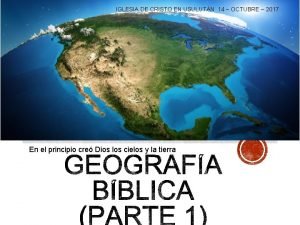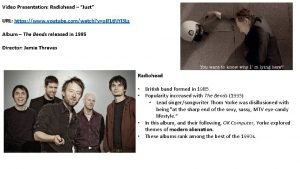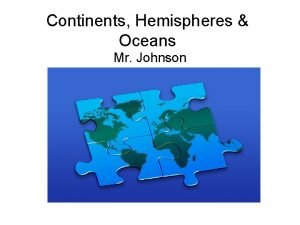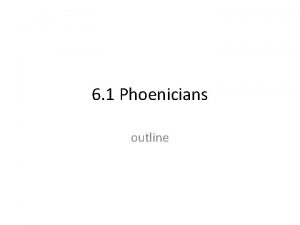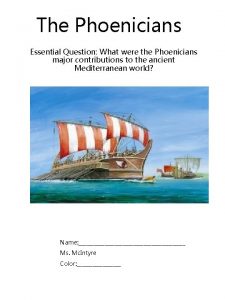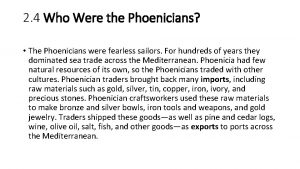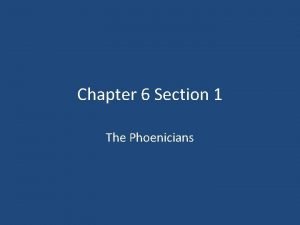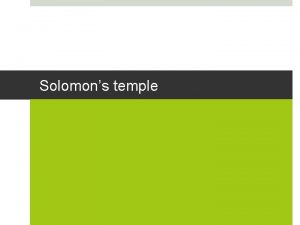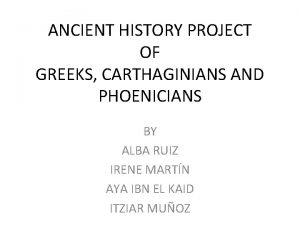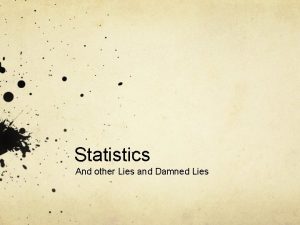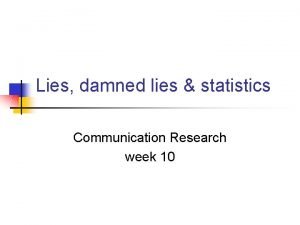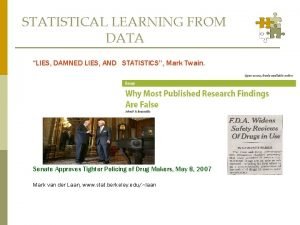Ancient Canaan The Phoenicians Canaan Lies at the





















- Slides: 21

Ancient Canaan & The Phoenicians

Canaan Lies at the eastern end of the Mediterranean Sea, in an area shared today by Lebanon & Israel. • In ancient times, this area connected Egypt and • Mesopotamia Soldiers, shepherds, and merchants transported goods & ideas Two groups formed small kingdoms in this land: • Phoenicians and Hebrews • Both groups interested in trade & learning




The Phoenicians (est @ 1830 B. C. E. ) Most information comes from: • The Bible • writings of other ancient peoples • the ruins of their ships and cities

Two different groups: Canaanites • from the desert south & east of Canaan • wandering herders Philistines • eastern Mediterranean near Greece • traders & shipbuilders

Sea-Based Trade • Land could not grow enough food • • for all people, so Phoenicians turned to the sea Used cedar wood to build strong, fast ships Sea-based trade – Traded: cedar logs, cloth, glass trinkets, perfume – For items such as: Egypt: gold & other metals, papyrus, linen Mesopotamia: pottery Cyprus: copper & animal hides

Phoenician Trade Routes


• Used the sun & stars for navigation • Signed peace treaties with larger & more powerful neighbors

Cities of Phoenicia • Phoenicia was a collection of independent • • • city-states- it never became a united country. Largest city-states were: Tyre, Byblos, Beirut, and Sidon Spoke the same language & practiced the same religion, but did not always get along Ruled by kings, then councils of merchants

City structure: – surrounded by large stone wall for protection – many merchant & artisan shops (esp carpenters, cabinet-makers, metalworkers) – Very crowded: narrow streets & packed buildings – Ports located outside the walls were the center of all activity


Cloth-dying centers – Phoenician means “purple merchants” – Legend of Melqart

Carthage • Sailors set up trading posts & colonies (permanent • • • settlements) that later turned into cities along coast of N. Africa Carthage founded in 814 B. C. E. in present-day Tunisia Became a powerful trading city Legend of the Phoenician princess Dido


Gods & Goddesses • Believed in many gods who were tied closely to • • nature Built temples to worship – entrance, main hall, and holy of holies – made sacrifices of wine, perfume, animals, and humans – only priests could offer sacrifices Life after death – at first buried in clay urns (ornamental vases) – later influenced by Egyptians: embalmed, wrapped, buried bodies

The Alphabet • Phoenicians did not invent the alphabet, but • • they did pass it on through trade to other cultures Used picture system at first, but difficult for trading Borrowed a simple version of Egyptian hieroglyphics from the people of the Canaanite towns to the south 22 symbols or letters used to form words Borrowed & evolved: Phoenicians to Greeks to Romans… eventually English!


 Where is phoenicia located
Where is phoenicia located East river valley phoenicians and israelites religion
East river valley phoenicians and israelites religion How did the minoans and phoenicians influence
How did the minoans and phoenicians influence Phoenicians competed with minoans for control of
Phoenicians competed with minoans for control of Means of communication from ancient to modern
Means of communication from ancient to modern Ancient india vs ancient china
Ancient india vs ancient china Genesis 32 9
Genesis 32 9 Physical features of canaan
Physical features of canaan Planning and zoning new canaan
Planning and zoning new canaan New canaan police department
New canaan police department Terra di canaan
Terra di canaan Map of abrahams journey
Map of abrahams journey New canaan football club
New canaan football club Joshua describes the conquest of canaan
Joshua describes the conquest of canaan Abraham's journey modern map
Abraham's journey modern map Los gigantes de canaan
Los gigantes de canaan Hombre de fe
Hombre de fe Countries no one knows
Countries no one knows Canaan mapa
Canaan mapa 7 lies of success
7 lies of success Jamie thraves
Jamie thraves India lies in which hemisphere
India lies in which hemisphere
